- UV Rating
- Category
- Clarity
- Materials
- Coatings
- Filters
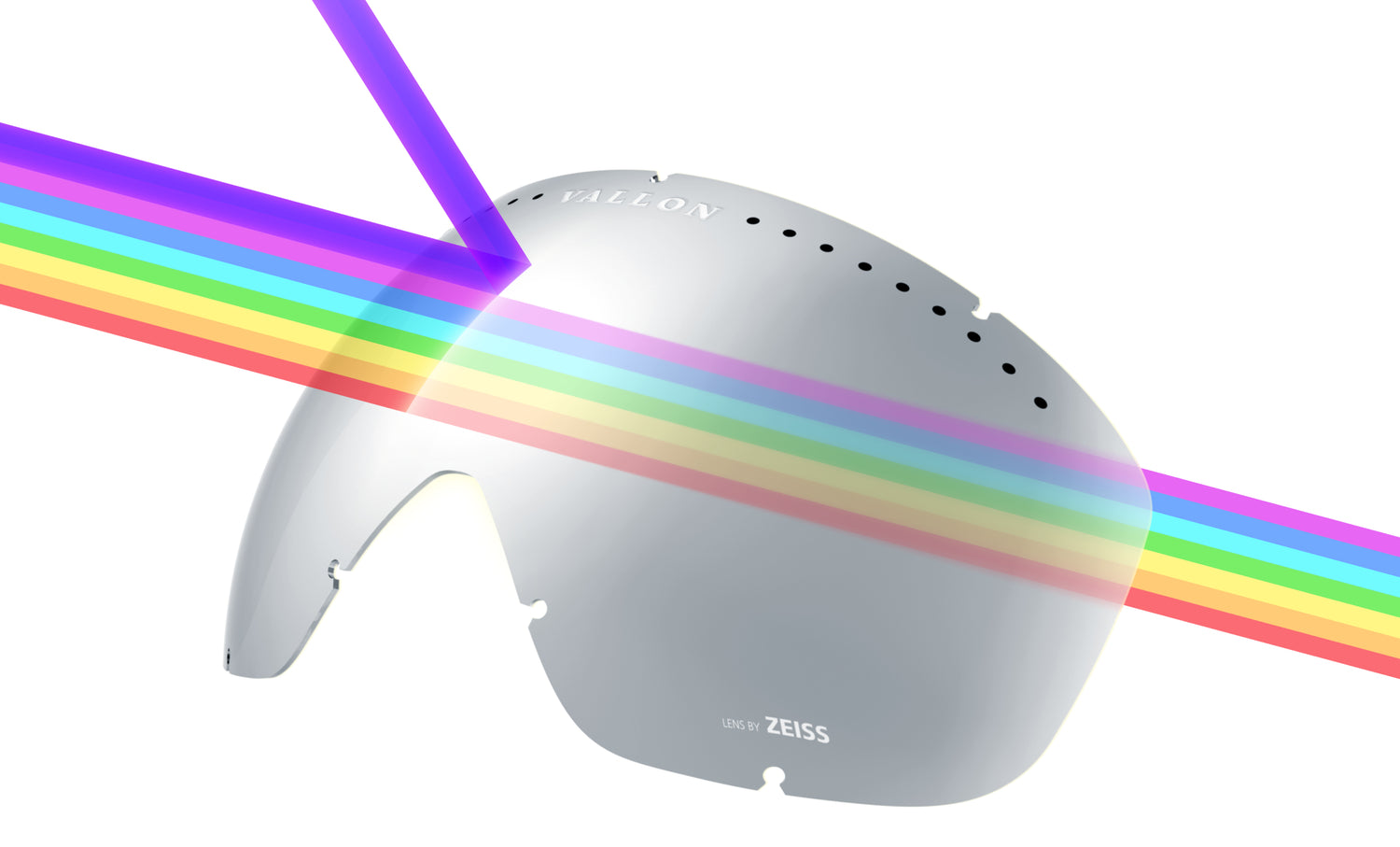
UV Rating
The highest UV protection rating available is UV400, which has 100% protection against UVA and UVB rays. (We see this as a non-negotiable in all VALLON sunglasses and ski goggles).
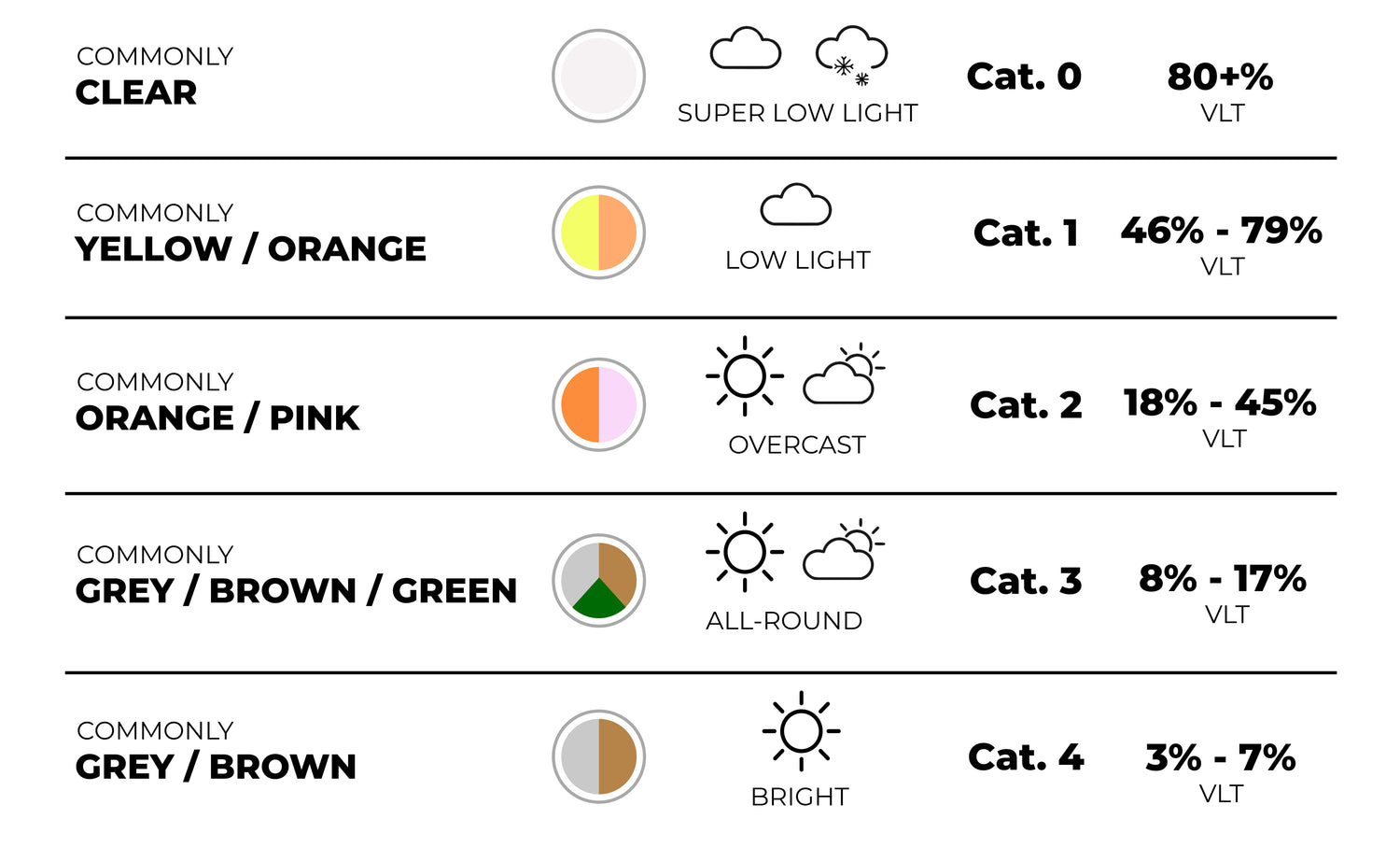
Category
Lens categories are determined by a metric called VLT (or Visible Light Transmission), which indicates how much light can pass through the lens to reach your eye. The higher the Category, the 'darker' the lens.
Cat. 4 lenses offer the highest level of protection for your eyes in areas of direct UV exposure and bright sunlight, such as at high altitude. However, in varied light conditions, such as biking or hiking through a forest, having a lower Category lens such as Cat. 2 or Cat. 3 can be more beneficial.
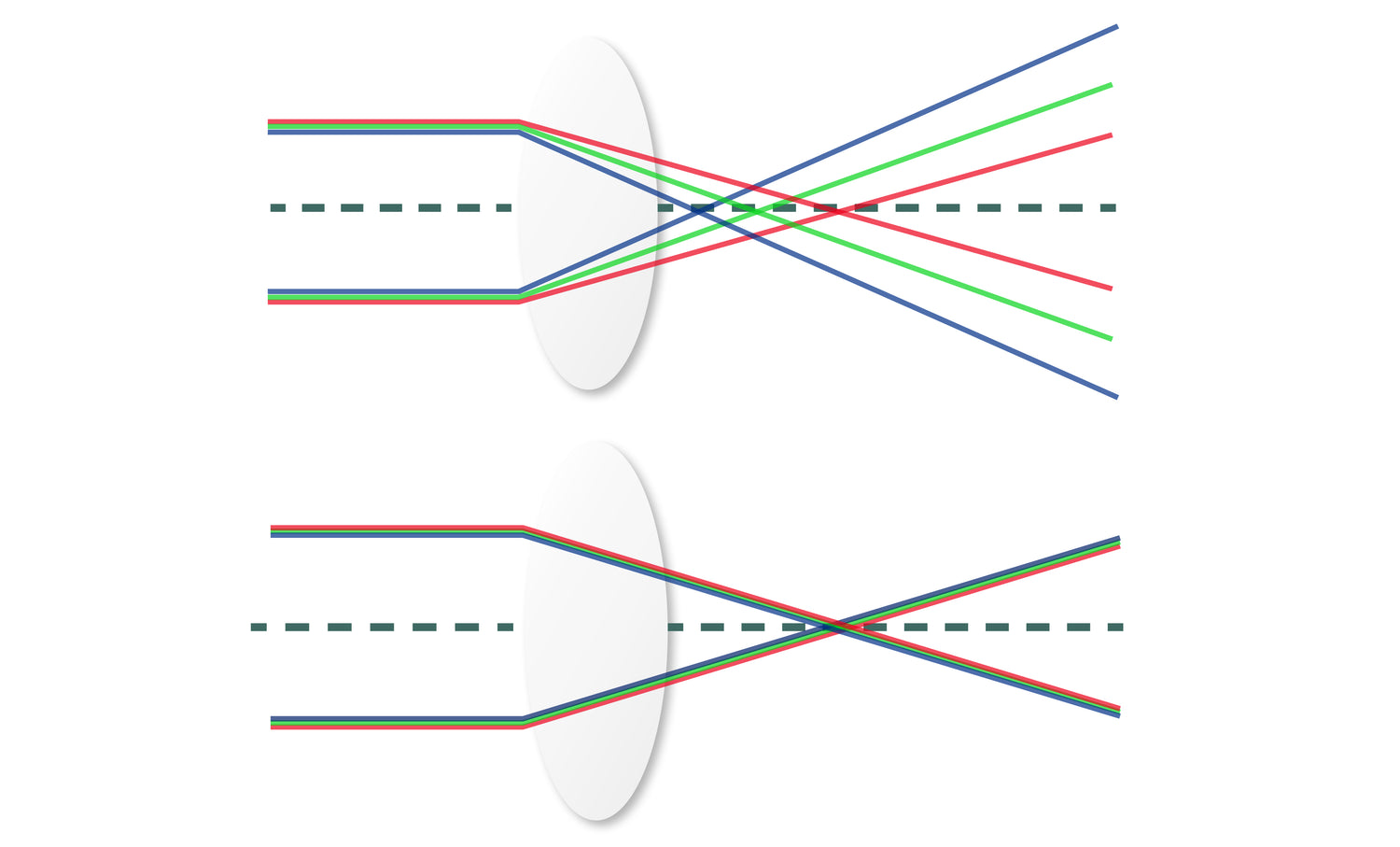
Clarity
Clarity is measured by ABBE value. The ABBE value measures the dispersion, (or chromatic aberration) in the material. In summary, the higher the ABBE value the clearer the lens.
Most sports eyewear are made with Trivex (ABBE 43-45), or industry-standard polycarbonate (ABBE 30) with a lower ABBE value.
VALLON V52® nylon lenses (ABBE 52) have the highest optical clarity of any performance sunglasses on the market. They have the least amount of distortion and offer better vision than polycarbonate or Trivex materials.
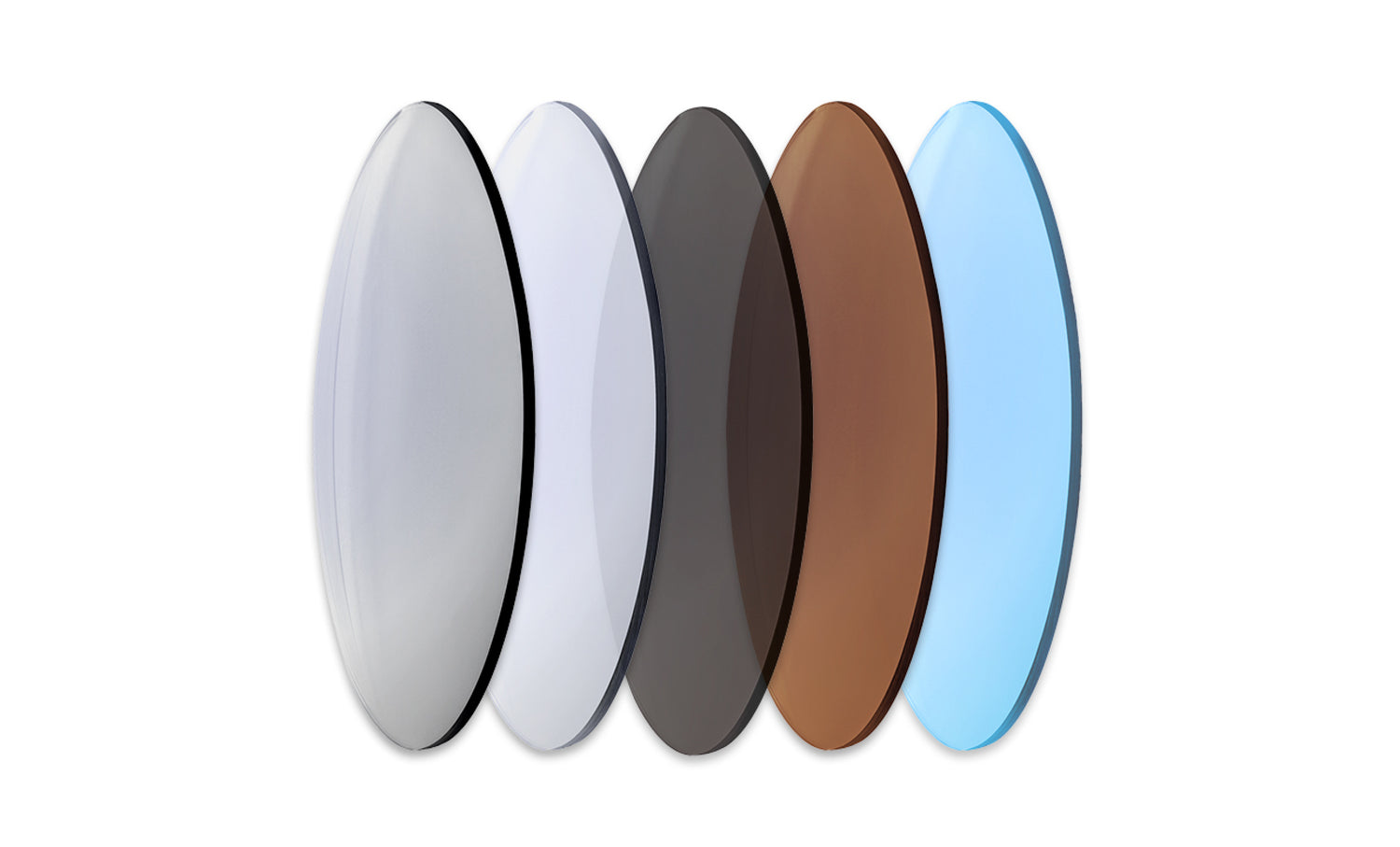
Materials
Not all lens materials are created equal. Here are a few examples of popular lens materials.
CR39
A popular lens material for everyday glasses. That said, CR39 is not commonly used in performance eyewear because it does not offer the same impact resistance as polycarbonate, and has poorer clarity than nylon polyamide.
Trivex
Trivex offers higher clarity than CR39, but is not commonly used for sports lenses as it has lower impact resistance than polycarbonate. Although classified as lightweight, VALLON’s V52® lens nylon polyamide material is 20% lighter than Trivex.
Polycarbonate
Polycarbonate is a highly durable, lightweight, and shatterproof material. Perfect for performance eyewear and high-octane activities.
Nylon Polyamide
VALLON’s V52® lenses are made using a durable and super lightweight nylon polyamide, offering exceptional clarity - ideal for performance eyewear. Learn more about our V52® technology here.
Mineral
Mineral (aka glass) is most commonly used in prescription glasses. But, because it is not shatter resistant, it is not commonly used for sports and performance eyewear.
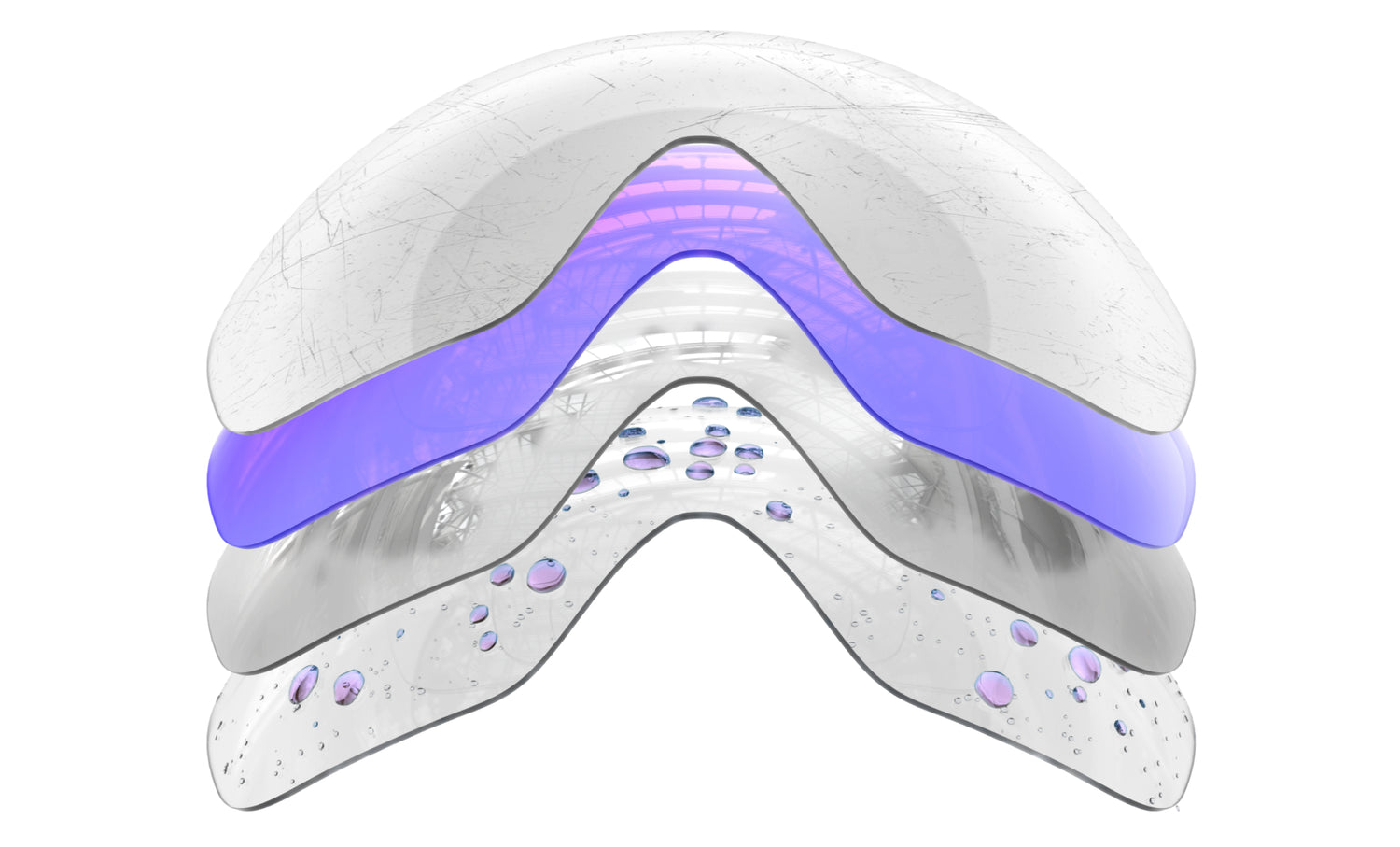
Coatings
Lens coatings serve a variety of purposes, and are often used when creating eyewear with a specific sport or activity in mind.
Anti-scratch
Protects the lens from scratches and abrasion.
Anti-reflective (AR)
A must-have for sports like motorcycling.
Anti-fog
Best for humid conditions, or for styles with reduced ventilation.
Hydro-oleophobic
Repels excess water and oils to keep vision clear.
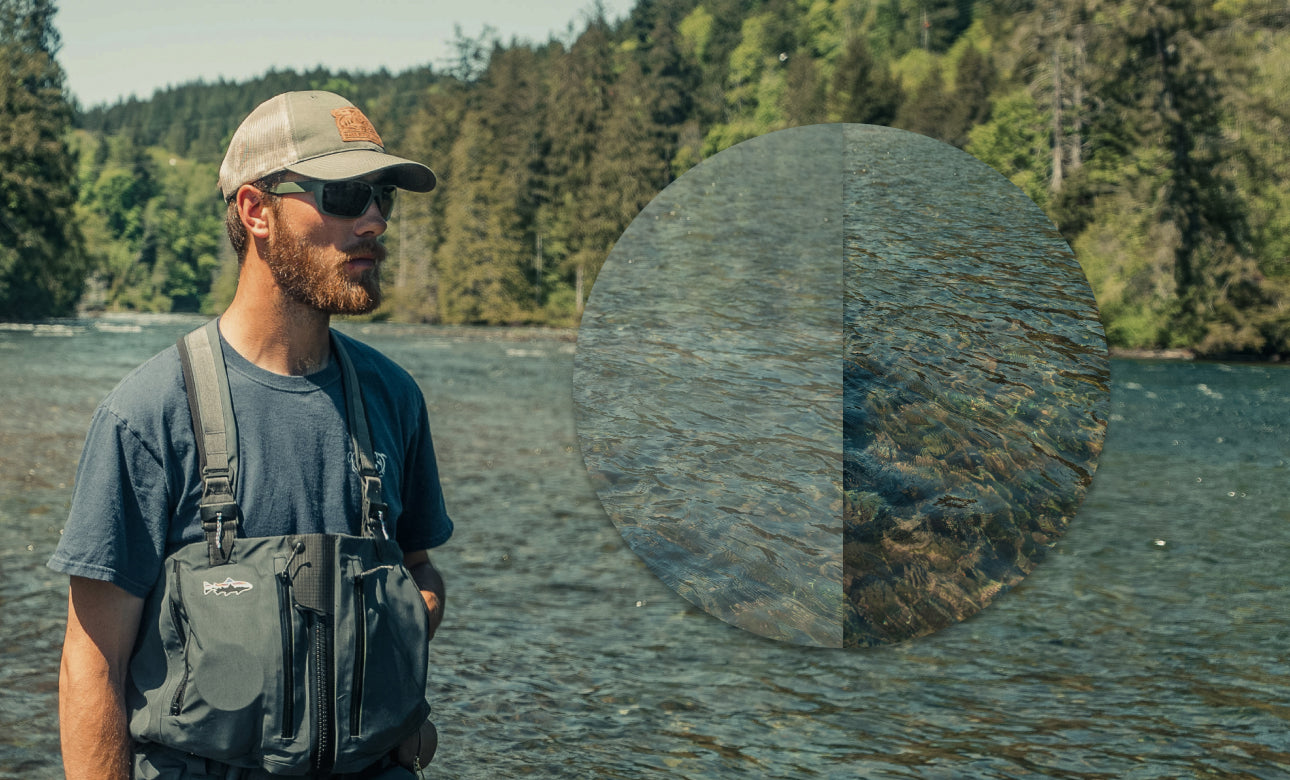
Filters
Polarized lenses are excellent for fishing and watersports. They reduce glare, and make it easier to differentiate what’s below the surface of the water. But the truth is, adding a polarization filter isn’t always better. To learn more, check out the VALLON Guide to Polarized Lenses.
